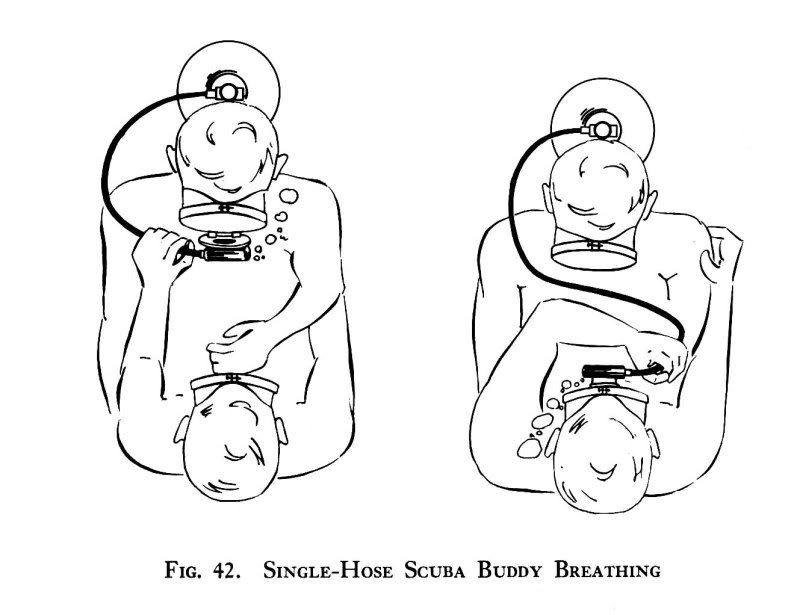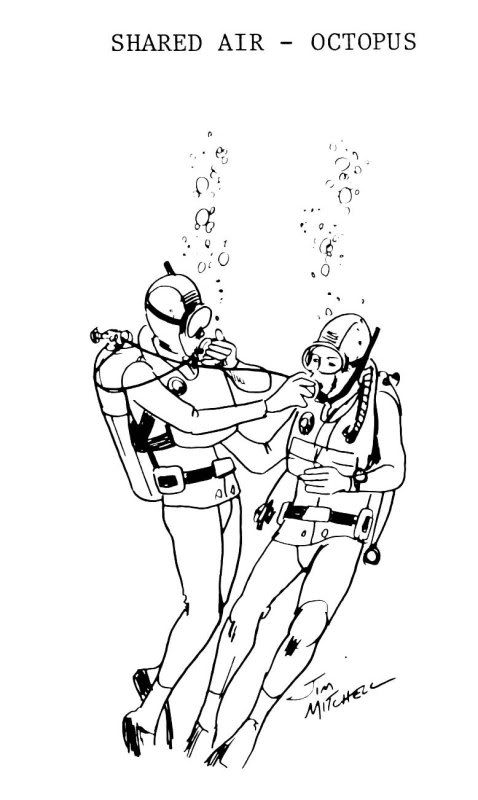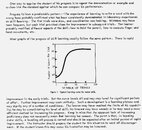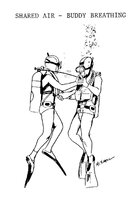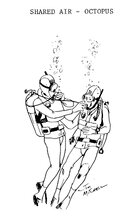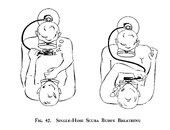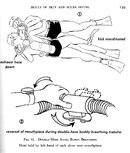Buddy Breathing
No matter how carefully planned the dive may be, unforeseen mechanical failure or excessive demands on the air supply may make it necessary for divers to share a air supply. Emergency ascents may be more safely accomplished if the need for "free" or "buoyant" ascents is eliminated. After some practice in a variety of positions, using either single- or double-hose scuba, nearly normal breathing cycles will be achieved by both divers. Initial practice in shoulder-deep water, kneeling or lying on the bottom face to face while learning to transfer the mouthpiece and clearing methods, will better prepare both divers for eventual swimming and ascent sharing of the single air supply.
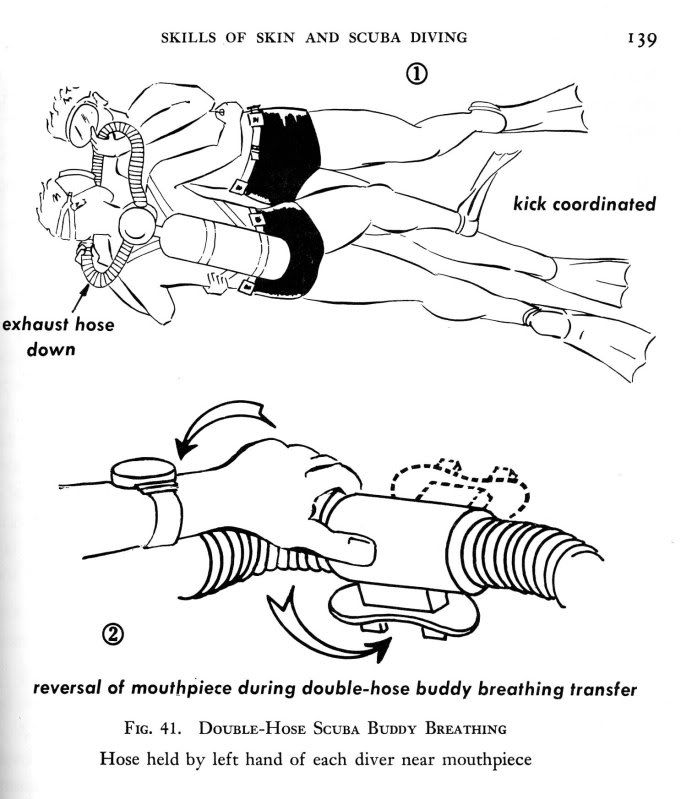
Horizontal or swimming position sharing will be best accomplished if the supplying hose is toward the surface. Double-hose scuba transfer in either vertical or horizontal position is generally uncomplicated because the mouthpiece need only be turned over to accommodate the sharing diver. Single-hose transfer is a little more complicated because of the necessity to keep the exhaust port in the area of the chin. The airless diver grasps the hose side of the mouthpiece assembly with t he left hand, palm toward the donor. The hand is turned, palm toward the receiver during the transfer. This action puts the mouthpiece in correct position. THe hose will have an "S" bend in it. Both purging button use and "puff" exhalation clearing should be practiced.
Coordination of movement and close contact will be facilitated if both divers maintain contact by holding with the free
right hand. This contact may be utilized to signal need for exchange or other action.
Buddy Breathing During Ascent
SPECIAL CAUTION MUST BE OBSERVED DURING AN ASCENT WHILE BUDDY BREATHING. Since the ascent should be at regular rate (60 feet per minute) and the breathing rate somewhat less than normal, THERE MUST BE CONTINUAL EXHALATION BETWEEN INHALATIONS DURING THE ENTIRE ASCENT. The exhalation may be controlled and minimal but of such character that AN OPEN AIRWAY IS MAINTAINED AT ALL TIMES.
All these skills should be accomplished in shallow water before going into deep water.
The method of clearing the mask while using the snorkel has been mentioned. Clearing the mask with the unit on is much easier, for then you have all the air you need.
pages 139-140,
The New Science of Skin and Scuba Diving, New Revised Edition, Council for National Co-operation in Aquatics, 1968




